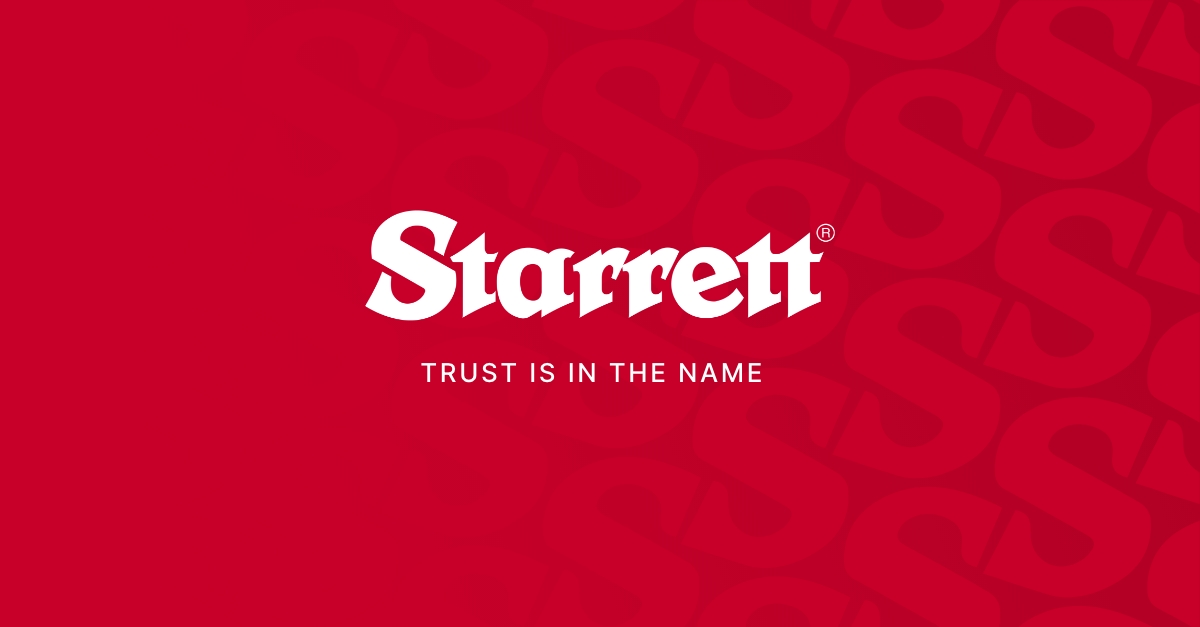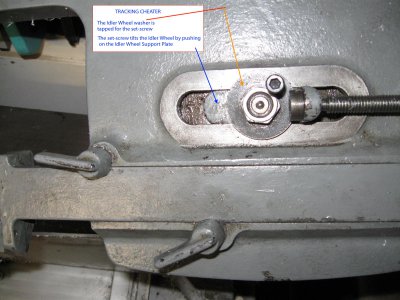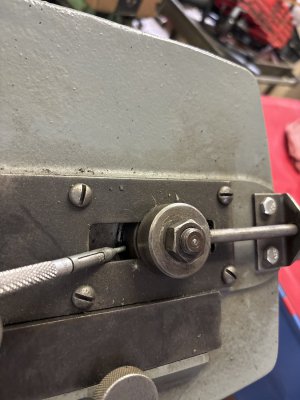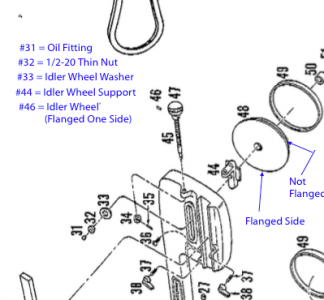Hi All!
I have a Sears Craftsman "Continuous Blade Power Hacksaw" Model 108.22920.
The manual calls for 0.020" maximum thickness blade, explaining that the radius is too tight for thicker blades. Unfortunately, I have not been able to find 60" blades with 14 & 24 TPI in 0.020".
I'm writing to ask if any of you who have a similar, small wheel band saw have had luck with 0.025" thick blades. Or, do you have a source for 0.020" blades that I missed in my searching? (I did find one 60" x 0.020", but it was too coarse at 10 TPI.)
In the past, I've had 0.025" blades break at the weld or braze, but that could be my error in tensioning or aligning the blade.
The saw was put aside for years out of frustration, but I decided to use it again. As of today, the saw is aligned. I made & installed new tires, so they're running true. I rebuilt the down-feed cylinder & it's working. Things are lubricated, per the manual. Guide rollers will be adjusted when I get a blade.
Thanks For Your Advice!
Paul
PS: If you don't mind another question:
Is it a good idea to lubricate the bevel gears? The one with the tire is aluminum and the other one is nylon or other plastic. My thought was Synco Super Lube. But, I don't know if the lube will serve as a "chip trap" and cause more wear to the gears than running dry.
PPS: And one more?
The shaft that has the small bevel gear can slide back & forth nearly half of an inch. There is an adjustment to align the gears with set-screws to push the top frame back or forward, but nothing locks the gear shaft in position once aligned.
I did not find on the saw or in the manual a way to lock the shaft & keep it from sliding back & forth.
For those of you with this saw, does your shaft move? (Perhaps this is on purpose so the gears stay aligned?)
Thanks Again!
Paul
I have a Sears Craftsman "Continuous Blade Power Hacksaw" Model 108.22920.
The manual calls for 0.020" maximum thickness blade, explaining that the radius is too tight for thicker blades. Unfortunately, I have not been able to find 60" blades with 14 & 24 TPI in 0.020".
I'm writing to ask if any of you who have a similar, small wheel band saw have had luck with 0.025" thick blades. Or, do you have a source for 0.020" blades that I missed in my searching? (I did find one 60" x 0.020", but it was too coarse at 10 TPI.)
In the past, I've had 0.025" blades break at the weld or braze, but that could be my error in tensioning or aligning the blade.
The saw was put aside for years out of frustration, but I decided to use it again. As of today, the saw is aligned. I made & installed new tires, so they're running true. I rebuilt the down-feed cylinder & it's working. Things are lubricated, per the manual. Guide rollers will be adjusted when I get a blade.
Thanks For Your Advice!
Paul
PS: If you don't mind another question:
Is it a good idea to lubricate the bevel gears? The one with the tire is aluminum and the other one is nylon or other plastic. My thought was Synco Super Lube. But, I don't know if the lube will serve as a "chip trap" and cause more wear to the gears than running dry.
PPS: And one more?
The shaft that has the small bevel gear can slide back & forth nearly half of an inch. There is an adjustment to align the gears with set-screws to push the top frame back or forward, but nothing locks the gear shaft in position once aligned.
I did not find on the saw or in the manual a way to lock the shaft & keep it from sliding back & forth.
For those of you with this saw, does your shaft move? (Perhaps this is on purpose so the gears stay aligned?)
Thanks Again!
Paul







